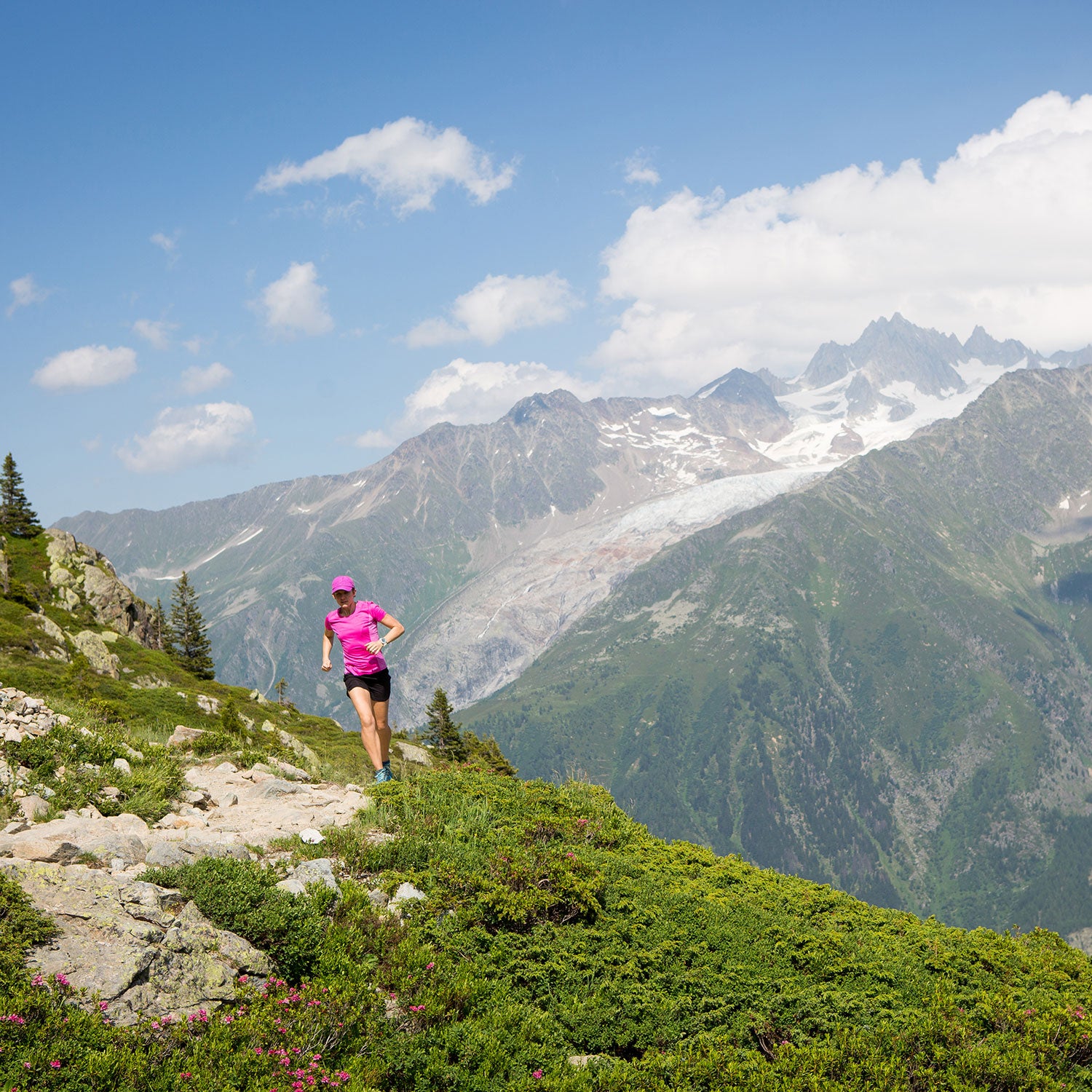Molly Sheridan felt like she was breathing through a straw and her veins were full of lead. It was the inaugural —a 137-mile race along an improbably high Himalayan summer road through Pakistan, China, and India.
Coming from Las Vegas, Nevada (elevation: 2,000 feet), Sheridan, 53 at the time, didn’t have much opportunity to acclimatize before she headed up to 17,000 feet. Despite the grueling race, she felt invincible after the fact. “After I finished that event, I felt like there was nothing on the planet I couldn’t do, because it’s such a huge, huge mental game.” That said, Sheridan would tell you that she could’ve prepped a little differently to abate the suffering.
No matter your goals, the best way to get used to altitude is, of course, to be at altitude. But there are three main steps you can take ahead of time to make the adjustment a little less miserable, according to , a running coach in Flagstaff, Arizona, who has been training athletes at altitude for nearly 20 years.
Your Body at Altitude
High altitude is generally considered to be anywhere from 8,000 to 18,000 feet. However, those coming from sea level may start feeling the effects—lightheadedness, pounding heart, GI distress, dehydration, and compromised performance, to name a few—as low as 5,000 feet.
Before you start trying to thwart the impact of high altitude, you have to understand what it’s doing to your body. Reduced air pressure at elevation allows oxygen molecules to spread out, so every breath has less oxygen compared to sea level. “When you first arrive at altitude, the body senses the reduced pressure,” McMillan says. “The kidneys communicate to the bone marrow to begin to produce more red blood cells to be able to carry more oxygen. Because the body is making more red blood cells, it also increases the volume of plasma—the non-cell part of the blood—so the blood doesn’t get too thick.” The body has to work way harder to do the most basic things—walk, digest food, think straight—until it adjusts.
If that sounds pretty awful, you’re right. Altitude effects can be uncomfortable at best and debilitating at worst. McMillan suggests the following three-step plan to keep symptoms at bay.
#1. Prepare
“You need to be as prepared as possible,” McMillan says. You want to make sure your nutritional status is good and that you’re fit going in, with your iron stores having been pumped up as much as possible. You need to be well hydrated and well prepared for the changes that may happen.”
Training techniques that increase cardiovascular capacity, like interval and hill training, can help limit the effects of altitude, as can technologies like high-altitude tents, which decrease air pressure and oxygen content while you sleep, or that filter oxygen out of the air as you breathe through them. While these can be helpful to try, just be aware that no altitude simulator can replace training at—or at least exposing yourself to—altitude.
McMillan recommends finding a way to spend a night or two as high as possible and at least giving your body and mind a chance to experience what the race or trip holds in store. He also recommends arriving as early as your schedule allows to give yourself a chance to ease into the elevation.
If you don’t have the luxury of time before, say, a high-altitude race, McMillan suggests flying in as close as possible to the race start to get the high exertion out of the way before the body fully registers the change. Two to three days before the race is an ideal window of adjustment time, he says.
#2. Anticipate Suffering
“You have to know that you are going to suffer more mentally,” McMillan says. “You need to get mentally prepared that it’s going to be harder.”
For sea-level-bound athletes, one way to mimic the impact of altitude is to train in hot conditions, McMillan says. In extreme heat, the body undergoes a similar plasma-building process—though it doesn’t add any red blood cells.
“It's not just the plasma volume changes that are beneficial. It’s the suffering—you know, if you’re running in hot and humid conditions, you begin to get a sense for increased perception of effort at the same pace,” he says.
#3. Slow Down and Adjust Expectations
“You should accept moving at a different pace than you would at sea level,” McMillan says. “If you’re going to train at elevation for a while before toeing the start, don’t train too hard too soon. You don’t have to push too hard in the beginning. If you ease into things, then you can slowly begin to return to normal.”
McMillan adds, “It takes about five to seven days before the body gets over its initial shock of being at altitude and does some of those fluid shifts.” He prescribes his athletes a week of very gentle training before diving into tough workouts. It often takes elite runners around a month to get back to their sea-level training load.


